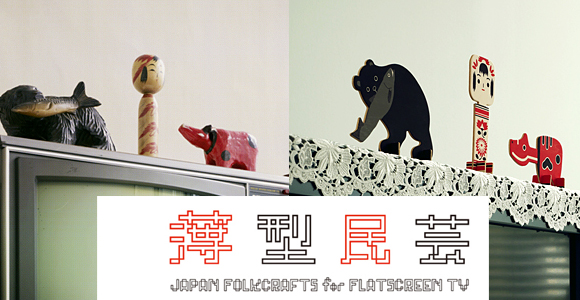 After the recent switch from analog to digital terrestrial broadcasting in Japan, more and more people are making the switch to flat screen units. And as the streets find themselves more and more littered with discarded boxy cathode ray tube model TV’s, Japan may have accidentally thrown something else in the trash – a piece of their culture and heritage.
After the recent switch from analog to digital terrestrial broadcasting in Japan, more and more people are making the switch to flat screen units. And as the streets find themselves more and more littered with discarded boxy cathode ray tube model TV’s, Japan may have accidentally thrown something else in the trash – a piece of their culture and heritage.
For those of us old enough to remember having a huge CRT style television it was certainly the household’s prime location for your best knickknacks. It had the most eye traffic after all.
However, with many TV tops nowadays measuring an inch in thickness that custom has become endangered. So, Japan Folkcrafts for Flatscreen TV was created. Applying the axiom “if you can’t beat ‘em join ‘em,” some of Japan’s favorite trinkets have become flattened to fit on current TV models.
You might be wondering why this concerted effort to save things put on the TV exists. Some of the most typical bric-a-brac actually have their own unique and deep connection to the history of Japan.
■ Wood Carving of a Bear (Kibori No Kuma)

It all started around 1921 when member of Parliament and descendant of the powerful Tokugawa Clan, Yoshichika Tokugawa took a trip to Switzerland. While there he took a fancy to a wooden carving of a bear and bought it as a souvenir.
After returning to Japan he noticed that the farmers in Hokkaido were struggling to make money during the harsh winter months. So he recommended that they take up carving wooden bears like his to make some extra cash in the off season – and they did.
Nearly a hundred years and millions of bears later the Hokkaido wooden bears can be found all over Japan.
■ Red Cow (Aka Beko)

■ Kokeshi

The reason for both these items’ popularity was a superstition that red colored toys would protect children from smallpox, which was running rampant at the time in Japan.
There are theories that kokeshi were actually originally designed to be either tools for abortion or memorials of them. These theories however are based on little more than the fact that the word “kokeshi” in Japanese can be interpreted to mean “child removal.”
■ Panda
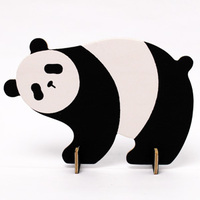
From that point on panda-monium struck Japan, whose people value cuteness more than anyone. Panda merchandise was flying off the shelves left and right and the phrase “Panda Barker” (Kyaku Yose Panda) was coined in Japanese. “Barker” is in the sense of a carnival barker, a panda barker is something so special that it brings in people/customers by the droves.
Perhaps Japan’s continuing love of pandas can help take them back to a more optimistic time with China.
These four knickknacks had a lot to teach about the history of Japan, and it looks like the makers of Folkcrafts for Flatscreen TV have more in the pipeline.
So if you’re lucky enough to stumble upon a CRT model television take look through those dusty ornaments on top. You might learn something.
Source: Japan Folkcrafts for Flatscreen TV via KiYOTO (Japanese)
▼Unfortunately, these cows’ heads don’t bobble.
▼They seem to be able to stand on the thinnest of things.

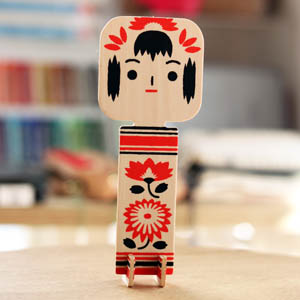


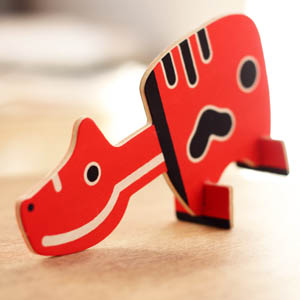
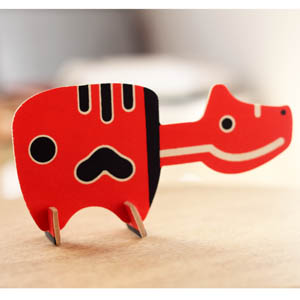
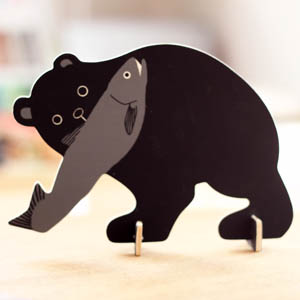
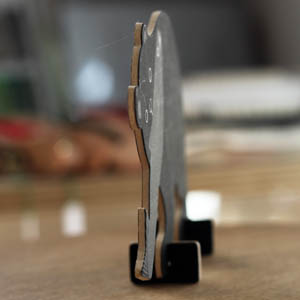
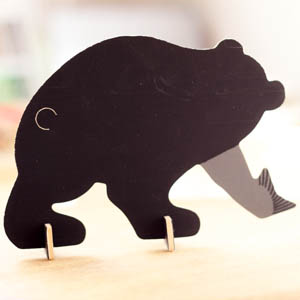
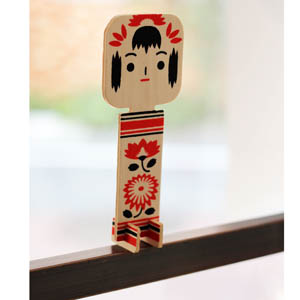
 Top Japanese cosplayer Enako returns to Comiket after 6 years, creates mayhem with admirers
Top Japanese cosplayer Enako returns to Comiket after 6 years, creates mayhem with admirers Private booths are coming to Japan’s Shinkansen bullet trains even sooner than we’d thought【Video】
Private booths are coming to Japan’s Shinkansen bullet trains even sooner than we’d thought【Video】 What makes a good boss in Japan? Workers sound off in survey
What makes a good boss in Japan? Workers sound off in survey Things get heavy with the Gold Lucky Bag from Village Vanguard
Things get heavy with the Gold Lucky Bag from Village Vanguard Frozen senbei packaging “looks like Anna hailing a cab for drunk Elsa” 【Pic】
Frozen senbei packaging “looks like Anna hailing a cab for drunk Elsa” 【Pic】 Top Japanese cosplayer Enako returns to Comiket after 6 years, creates mayhem with admirers
Top Japanese cosplayer Enako returns to Comiket after 6 years, creates mayhem with admirers Private booths are coming to Japan’s Shinkansen bullet trains even sooner than we’d thought【Video】
Private booths are coming to Japan’s Shinkansen bullet trains even sooner than we’d thought【Video】 What makes a good boss in Japan? Workers sound off in survey
What makes a good boss in Japan? Workers sound off in survey Things get heavy with the Gold Lucky Bag from Village Vanguard
Things get heavy with the Gold Lucky Bag from Village Vanguard Frozen senbei packaging “looks like Anna hailing a cab for drunk Elsa” 【Pic】
Frozen senbei packaging “looks like Anna hailing a cab for drunk Elsa” 【Pic】 McDonald’s Japan has free smiles on its delivery menu, but does asking for one make a difference?
McDonald’s Japan has free smiles on its delivery menu, but does asking for one make a difference? Nearly one in ten young adults living in Japan isn’t ethnically Japanese, statistics show
Nearly one in ten young adults living in Japan isn’t ethnically Japanese, statistics show Pizza Hut Japan’s hot lucky bags are perfect for a New Year’s pizza party
Pizza Hut Japan’s hot lucky bags are perfect for a New Year’s pizza party Nine countries, tons of food, one mode of transportation – From Beijing to London by train
Nine countries, tons of food, one mode of transportation – From Beijing to London by train The Purple Lucky Bag from Village Vanguard is an extra-large waste of money
The Purple Lucky Bag from Village Vanguard is an extra-large waste of money Starbucks Japan ready to get Year of the Horse started with adorable drinkware and plushies【Pics】
Starbucks Japan ready to get Year of the Horse started with adorable drinkware and plushies【Pics】 Japanese beef bowl chain Sukiya’s 2026 Smile Box lucky bag basically pays for itself
Japanese beef bowl chain Sukiya’s 2026 Smile Box lucky bag basically pays for itself Hayao Miyazaki says Happy New Year to Studio Ghibli fans with new art for Year of the Horse
Hayao Miyazaki says Happy New Year to Studio Ghibli fans with new art for Year of the Horse Cup Noodle tries an authentic Jiro-style ramen, but something’s not quite right
Cup Noodle tries an authentic Jiro-style ramen, but something’s not quite right The best Starbucks Japan Frappuccinos we want to drink again in 2026
The best Starbucks Japan Frappuccinos we want to drink again in 2026 We revisited Sweets Paradise after a decade to see if Japan’s dessert buffet still delivers
We revisited Sweets Paradise after a decade to see if Japan’s dessert buffet still delivers That time Seiji called JASRAC to ask why he didn’t get paid royalties for his song being on TV
That time Seiji called JASRAC to ask why he didn’t get paid royalties for his song being on TV We found possibly the quietest Japanese-style hotel in Tokyo’s bustling Shinjuku district
We found possibly the quietest Japanese-style hotel in Tokyo’s bustling Shinjuku district Japan’s oldest largetooth sawfish in captivity back on display in Mie Prefecture
Japan’s oldest largetooth sawfish in captivity back on display in Mie Prefecture 7-Eleven Japan starts new temporary luggage storage service in over 300 branches
7-Eleven Japan starts new temporary luggage storage service in over 300 branches Disillusionment at Tsukiji’s tourist-target prices led us to a great ramen restaurant in Tokyo
Disillusionment at Tsukiji’s tourist-target prices led us to a great ramen restaurant in Tokyo Starbucks teams up with 166-year-old Kyoto doll maker for Year of the Horse decorations【Photos】
Starbucks teams up with 166-year-old Kyoto doll maker for Year of the Horse decorations【Photos】 Tokyo considering law requiring more trash cans following litter increase in heavily touristed area
Tokyo considering law requiring more trash cans following litter increase in heavily touristed area Tokyo’s Tsukiji sushi neighborhood asks tour groups to stay away for the rest of the month
Tokyo’s Tsukiji sushi neighborhood asks tour groups to stay away for the rest of the month Tokyo event lets you travel back in time, for free, to celebrate 100 years since Showa era start
Tokyo event lets you travel back in time, for free, to celebrate 100 years since Showa era start Japan may add Japanese language proficiency, lifestyle classes to permanent foreign resident requirements
Japan may add Japanese language proficiency, lifestyle classes to permanent foreign resident requirements Sanrio theme park in Japan announces plans to expand into a Sanrio resort
Sanrio theme park in Japan announces plans to expand into a Sanrio resort Stamina-destroying “Paralysis Noodles” are Tokyo’s newest over-the-top ramen innovation
Stamina-destroying “Paralysis Noodles” are Tokyo’s newest over-the-top ramen innovation Survey asks foreign tourists what bothered them in Japan, more than half gave same answer
Survey asks foreign tourists what bothered them in Japan, more than half gave same answer Japan’s human washing machines will go on sale to general public, demos to be held in Tokyo
Japan’s human washing machines will go on sale to general public, demos to be held in Tokyo Japan’s deadliest food claims more victims, but why do people keep eating it for New Year’s?
Japan’s deadliest food claims more victims, but why do people keep eating it for New Year’s? We deeply regret going into this tunnel on our walk in the mountains of Japan
We deeply regret going into this tunnel on our walk in the mountains of Japan Studio Ghibli releases Kodama forest spirits from Princess Mononoke to light up your home
Studio Ghibli releases Kodama forest spirits from Princess Mononoke to light up your home Major Japanese hotel chain says reservations via overseas booking sites may not be valid
Major Japanese hotel chain says reservations via overseas booking sites may not be valid Put sesame oil in your coffee? Japanese maker says it’s the best way to start your day【Taste test】
Put sesame oil in your coffee? Japanese maker says it’s the best way to start your day【Taste test】 No more using real katana for tourism activities, Japan’s National Police Agency says
No more using real katana for tourism activities, Japan’s National Police Agency says Starbucks Japan reveals new sakura drinkware collection, inspired by evening cherry blossoms
Starbucks Japan reveals new sakura drinkware collection, inspired by evening cherry blossoms Updated cherry blossom forecast shows extra-long sakura season for Japan this year
Updated cherry blossom forecast shows extra-long sakura season for Japan this year McDonald’s Japan has free smiles on its delivery menu, but does asking for one make a difference?
McDonald’s Japan has free smiles on its delivery menu, but does asking for one make a difference? Nearly one in ten young adults living in Japan isn’t ethnically Japanese, statistics show
Nearly one in ten young adults living in Japan isn’t ethnically Japanese, statistics show Pizza Hut Japan’s hot lucky bags are perfect for a New Year’s pizza party
Pizza Hut Japan’s hot lucky bags are perfect for a New Year’s pizza party Nine countries, tons of food, one mode of transportation – From Beijing to London by train
Nine countries, tons of food, one mode of transportation – From Beijing to London by train The Purple Lucky Bag from Village Vanguard is an extra-large waste of money
The Purple Lucky Bag from Village Vanguard is an extra-large waste of money Majority of Japanese men say they feel some discomfort seeing female janitors in men’s restrooms
Majority of Japanese men say they feel some discomfort seeing female janitors in men’s restrooms Record number of foreign children in Japan need help understanding Japanese in school
Record number of foreign children in Japan need help understanding Japanese in school 7-Eleven Japan’s ramen-cooking robot whipped us up a bowl of noodles【Taste test】
7-Eleven Japan’s ramen-cooking robot whipped us up a bowl of noodles【Taste test】 Dragon Quest Burgers and Slime drinks are coming to McDonald’s Japan【Video】
Dragon Quest Burgers and Slime drinks are coming to McDonald’s Japan【Video】 Suntory’s famous Yamazaki whisky returns to canned cocktails with new highball version
Suntory’s famous Yamazaki whisky returns to canned cocktails with new highball version Japanese beef bowl chain Sukiya’s 2026 Smile Box lucky bag basically pays for itself
Japanese beef bowl chain Sukiya’s 2026 Smile Box lucky bag basically pays for itself Starbucks Japan unveils new Sakura Frappuccino for cherry blossom season 2025
Starbucks Japan unveils new Sakura Frappuccino for cherry blossom season 2025 Rakuten randomly offers 58 New Year’s osechi feasts in Japan, but did we get a star or a dud?
Rakuten randomly offers 58 New Year’s osechi feasts in Japan, but did we get a star or a dud?
Leave a Reply